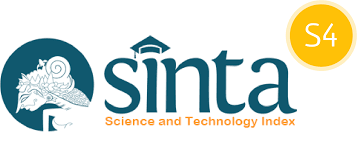Cultivar Diversity of Balsam (Impatiens balsamina L.) in Banyumas Regency
Abstract
Balsam or garden balsam (Impatiens balsamina L.) is a widely grown flowering plant belonging to the family Balsaminaceae. The most conspicuous part to distinguish the balsam is the difference in the flower shape and colors of each cultivar. The purpose of this research is to find out the cultivars diversity of the balsam. The method used in this study was survey with purposive sampling. The variables observed in this study was morphological characteristics including the stem, leaves, flowers, fruits, and seeds. The data obtained were analysed descriptively. The result of this study showed that there were 15 cultivars of I. Balsamina i.e. 'Pinkish White 5 Petal', 'Mix Pink Camellia, 'Pinkish White Camellia, 'Vivid Pink', 'White', 'Light Pink', 'Pinkish White', 'Light Magenta', 'Vivid Red', 'Red Camellia, 'Reddish Camellia, 'Rose Red Camellia, 'Vivid Magenta Camellia, 'Rose Green Camellia, and 'Vivid Pink Camellia’.
References
Caris, P. L., Geuten, K. P., Janssens, S. B. & Smets, E. F., 2006. Floral Development in Three Species of Impatiens (Balsaminaceae). American Journal of Botany, 93(1) : 1-14.
KPU Kabupaten Banyumas, 2019. Peta Banyumas KPU Banyumas. [Online]
Available at: http://kab-banyumas.kpu.go.id/setelah-penetapan-dapil-kpuajak-parpol-belajar-tata-cara-penghitungan-kursi/peta-banyumas-kpubanyumas/ [Diakses 27 August 2019].
Kementrian Pertanian, 2015. Peta Pengembangan Kawasan Padi dan Kedelai Kabupaten Banyumas, Provinsi Jawa Tengah, Jakarta: Sekretariat Jenderal Kementrian Pertanian.
Meenu, B., D., N. E., Rejimon, G. & Varghese, A., 2015. Impatiens balsamina : An overview. Journal of Chemical and Pharmaceutical Research, 7(9) : 16-21.
Newcomb, P. C., 1985. Popular Annuals of Eastern North America. Washington, D.C.: Dumbartone Oaks.
Pal, S., 2015. Evaluation and Genetic Analysis in Various Genotypes of Balsam (Impatiens balsamina L.). Thesis : 1-147.
PROSEA Indonesia, 1999. Sumber Daya Nabati Asia Tenggara. Dalam: R. Lemmens & N. W. Soetjipto,. Tumbuh-Tumbuhan Penghasil Pewarna dan Tanin. 3. Bogor: PT. Balai Pustaka, 93.
Pemerintah Kab. Banyumas, 2018. Ketinggian Wilayah Kabupaten Banyumas dari Permukaan Laut. [Online]Available at: http://data.jatengprov.go.id/dataset/ketinggian-wilayahkabupaten banyumas-dari-permukaan-laut[Diakses 27 August 2019].
Pouteau, S., Tooke, F. & Battey, N., 1998. Quantitative Control of Inflorescence Formation in Impatiens balsamina. Plant Physiol, Volume 118 : 1191-1201.
Schmidt, F. H. & Ferguson, J. H., 1951. Rainfall Types based on Wet and Dry period Ratios for indonesia with Western New Guinea.. 42. Jakarta: Djawatan meteorologi dan Geofisik.
Tanem, B. & Williamson, D., 2002. Annuals fo Northern California. Canada: Lone Pine Publishing.
Utami, N., 2012. Impatiens talakmauensis (Balsaminaceae), A New Species from Western Sumatra, Indonesia. Acta Phytotaxonomica Geobotanica, 63(1) : 51-5
D, N. E., Rejimon, G. and Varghese, A. (2015) ‘Impatiens balsamina: An overview’, Journal of Chemical and Pharmaceutical Research.
Pharmacon. 2017. ‘FORMULASI SEDIAAN SABUN CAIR ANTISEPTIK EKSTRAK ETANOL BUNGA PACAR AIR (IMPATIENS BALSAMINA L.) DAN UJI EFEKTIVITASNYA TERHADAP BAKTERI STAPHYLOCOCCUS AUREUS SECARA IN VITRO’ (2017) PHARMACON. doi: 10.35799/pha.6.2017.16885.
Janssens, S. B. et al. (2009) ‘Rapid radiation of Impatiens (Balsaminaceae) during Pliocene and Pleistocene: Result of a global climate change’, Molecular Phylogenetics and Evolution. doi: 10.1016/j.ympev.2009.04.013.














_copy.png)



